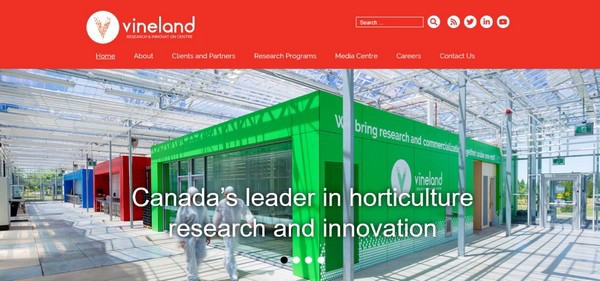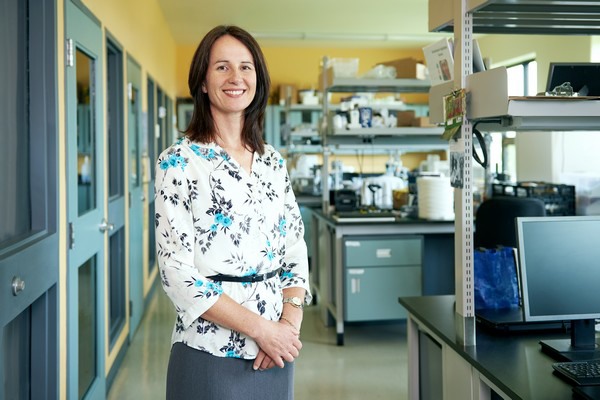Vineland Research and Innovation Centre started in 2007, and has been growing ever since. One year ago a new CEO, Ian Potter was appointed. At that time, the company started a process of focus and renewal, including finetuning their innovation strategy.
Renewal
Part of that renewal is a new website, which is easier to navigate and more real-world. Tania Humphrey, Vice President of Research and Development, spoke about the new innovation strategy. Vineland started at a site which had already been a research center for a hundred years. In 2007, a new corporate entity was started.

Vineland's new website
“We really needed to focus,” says Tania. “We needed to look at how we were using our resources and how we should be using them. We finetuned that focus onto the further Vineland mission.” The company filters what they do through the new strategy, to keep on track.

Tania Humphrey, Vice President Research and Development
Goals
Vineland research has set three long term main goals, that will be reviewed as they go. The first one is diversification and enhancement, which focusses on the products themselves. The fruits, vegetables and flowers. “We want to refine horticultural products, to help ourselves and others.”
The second goal is about labour issues. “Labour is the highest cost in horticulture,” says Tania, “and growers are challenged with costs and (limited) availability of workers. Many countries in the developed world need labour to be cheaper, and therefore automation is a big focus.”
The third one is focused on empowering the sector to improve environmental influences. The organisation wants to encourage the expansion of the nursery sector and the use of trees and plants in urban environments. “Trees and plants are important for people’s health,” explains Tania. Vineland also wants to reduce the use of chemical pesticides. “Especially in greenhouses, biological pest control is already widely used. We want to identify potential new products and solutions.”
Unique questions and trends
Vineland has employees with all different types of expertise. When working on a project, the organisation puts together multiple people from different fields of work. “One person may be winetasting the one day, and researching flavour profiles in apples the next. This way of working allows us to answer the most challenging and unique questions,” says Tania.
The trends in the horticultural sector are part of the new model that was created. “The innovation strategy evolved out of what the company heard from people in the industry,” says Tania, “and ongoing discussions with our partners. We have all kinds of interactions with different people, and ultimately that is how we succeed.”
The new website is www.vinelandresearch.com.
For more information:
Vineland Research and Innovation Centre
4890 Victoria Avenue North, Box 4000,
Vineland Station, Ontario
info@vinelandresearch.com
